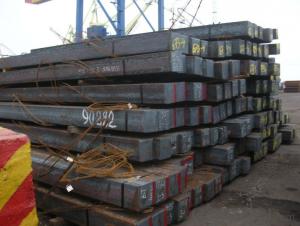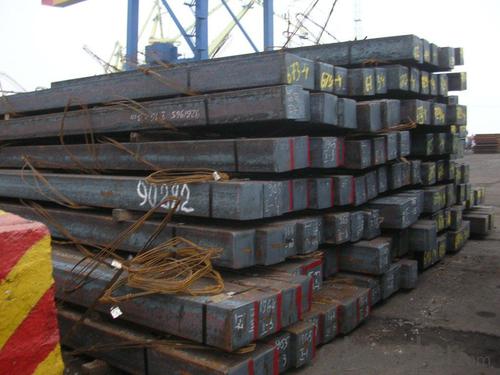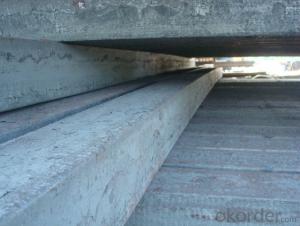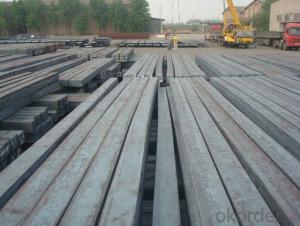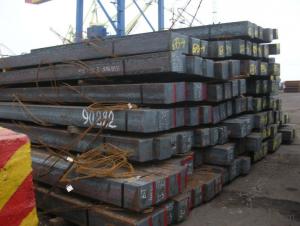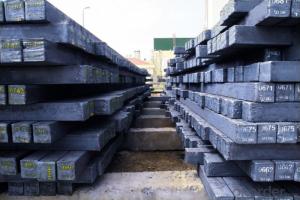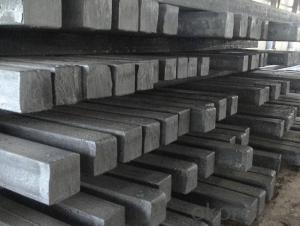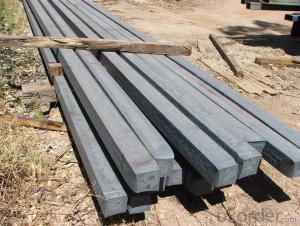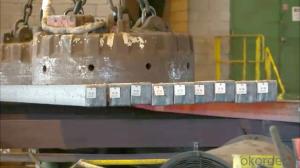Hot Rolled Steel Billet 3SP Standard 195mm
- Loading Port:
- Shanghai
- Payment Terms:
- TT OR LC
- Min Order Qty:
- 100 m.t.
- Supply Capability:
- 10000 m.t./month
OKorder Service Pledge
OKorder Financial Service
You Might Also Like
Structure of Hot Rolled Steel Billet 3SP Standard 195mm

Description of Hot Rolled Steel Billet 3SP Standard 195mm
Prepainted Rolled steel Coil is a kind of coated steel coil/sheet. With the cold rolled steel of different strength and thickness as substrate, it is produced through applying Al-Zn coat on both faces by hot dip process. In its coating, Al accounts for about 55%, Si 1.6%, while the remaining is Zn. Aluminum zinc coils enjoys both the physical protective feature and durability of Al and the electrochemical protective property of Zn. And its surface has bright silver color and regular embossed-like figure, which are highly decorative. RAL Scale Z35 Prepainted Rolled Steel Coil for Construction Roofing

Main Feature of Hot Rolled Steel Billet 3SP Standard 195mm
1.Corrosion resistance: It mainly depends on the zinc protection. When the zinc being worn,
2. Heat resistance: steel sheet has excellent heat resistance, can withstand high temperatures over 300 centigrade, and is similar with aluminized steel high temperature oxidation resistance. It often used in chimney pipes, ovens, fluorescent lighting device and the device cover.
3. Heat reflective: Galvanized steel plate heat-reflective high rate is twice as galvanized steel, often used to make insulation materials. RAL Scale Z35 Prepainted Rolled Steel Coil for Construction Roofing
Applications of Hot Rolled Steel Billet 3SP Standard 195mm
1. Construction and building: roofing; ventilating duct; handrail; partition panel;etc.
2. Electric appliance: refrigerator; washing machine; refrigerator; DVD;etc.
3.Transportation: oil tank; gas tank;road sign; etc.
4.Agriculture constructions :barn; etc.RAL Scale Z35 Prepainted Rolled Steel Coil for Construction Roofing
5.Others:vending machine; game machine; auto parts spare parts etc.
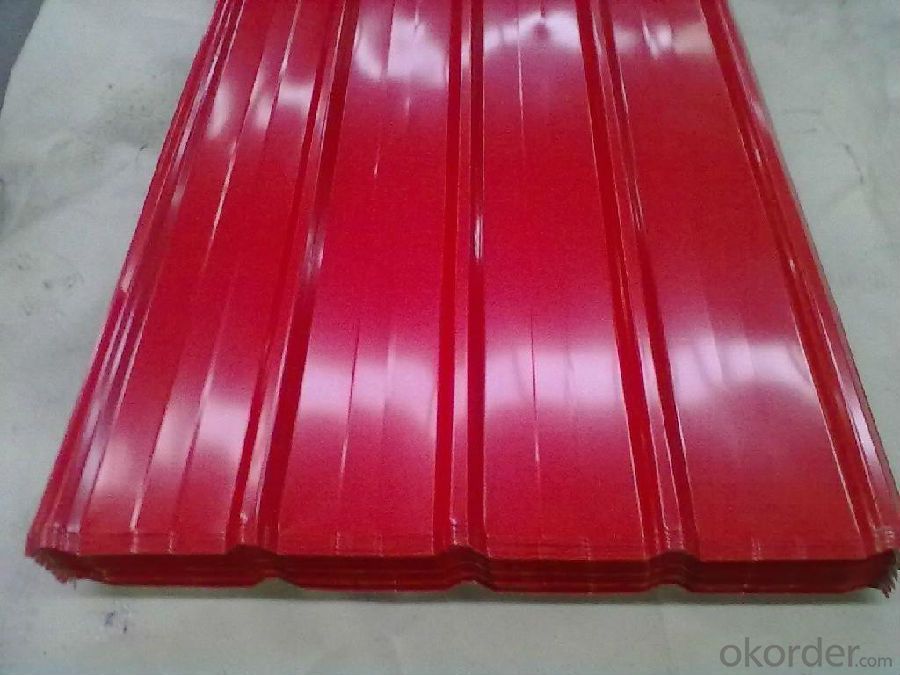
Specifications of Hot Rolled Steel Billet 3SP Standard 195mm
Product | Hot Rolled Steel Billet 3SP Standard 115mm |
Material Grade | SGCC / SGCH / DX51D+AZ, etc |
Thickness | 0.5-3.0mm |
Width | 700-1500mm |
Tolerance | Thickness: +/-0.02mm , Width:+/-2mm |
Zinc-coating | AZ30-150g/m2 |
Technique | Raw material: Hot rolled steel coil --> Cold rolled_>hot dipped galvalume |
Surface | Dried, Chromated, Unoiled,RAL Scale Z35 Prepainted Rolled Steel Coil for Construction Roofing |
Spangle | Regular spangle , small spangle, zero spangle |
ID | 508MM 610MM |
Coil weight | 25MT max |
Export package | Cardboard inner sleeves, Waterproof paper, galvanized steel covered and steel strip packed |
FAQ of Hot Rolled Steel Billet 3SP Standard 195mm
We have organized several common questions for our clients,may help you sincerely:
1. What is the minimum order quantity ?
Our MOQ is 100 mt for each size each specification. Usually we can offer discount if can buy large QTY once. RAL Scale Z35 Prepainted Rolled Steel Coil for Construction Roofing
2. How long can we receive the product after ordering?
Our general delivery time is 30 days after confirmation, but so some special orders, we have offer special delivery time
3. How to guarantee the quality of the products?
We have established the international advanced quality management system ,every link from raw material to final product we have strict quality test;We resolutely put an end to unqualified products flowing into the market. At the same time, we will provide necessary follow-up service assurance.
4. What is the payment?
We accept T/T, L/C
- Q: What are the safety measures involved in handling steel billets?
- Some safety measures involved in handling steel billets include wearing personal protective equipment such as gloves, safety glasses, and steel-toed boots to protect against potential injuries. Additionally, using proper lifting techniques and equipment like cranes or forklifts can help prevent strain or accidents. It is important to ensure that the work area is well-lit and free of clutter to minimize trips and falls. Regular maintenance and inspection of equipment is also crucial to prevent any malfunctions or hazards.
- Q: Can steel billets be used in the production of medical equipment?
- Yes, steel billets can be used in the production of medical equipment. Steel is known for its strength, durability, and resistance to corrosion, making it an ideal material for manufacturing various medical devices. Steel billets, which are the initial semi-finished product of steel production, can be further processed and shaped into specific components or parts required for medical equipment. These components can include surgical instruments, implants, orthopedic devices, needles, and other medical tools. Steel's mechanical properties and ability to withstand sterilization processes make it a suitable choice for producing safe and reliable medical equipment.
- Q: What are the cost implications of using steel billets in manufacturing?
- The cost implications of using steel billets in manufacturing can vary depending on several factors. Firstly, the price of steel billets themselves can fluctuate due to market conditions and supply and demand. Additionally, the cost of transportation and logistics to acquire and transport the billets to the manufacturing facility can impact overall expenses. Moreover, the processing and fabrication techniques required to convert the billets into finished products may incur additional costs, such as labor, energy, and equipment expenses. Furthermore, the quality and characteristics of the steel billets, including their composition, size, and surface finish, can also influence costs. Ultimately, careful consideration of these factors is necessary to assess the cost implications accurately.
- Q: What are the common sizes of steel billets?
- The sizes of steel billets can differ depending on the specific industry and application. However, there are various standard sizes that are frequently utilized. In the construction sector, steel billets commonly measure between 100mm x 100mm and 200mm x 200mm. These sizes are often employed in the fabrication of structural steel, such as beams, columns, and other load-bearing elements. For the production of automotive parts, the usual sizes of steel billets typically range from 150mm x 150mm to 250mm x 250mm. These sizes are commonly employed in forging and machining processes to manufacture components like crankshafts, connecting rods, and gears. In the oil and gas industry, larger steel billets are often necessary for manufacturing pipes and tubes. The typical sizes for this purpose range from 350mm x 350mm to 500mm x 500mm. These larger billets enable the production of seamless pipes capable of withstanding high-pressure environments. It should be noted that these are only general sizes and can vary depending on specific project requirements and regional standards. Additionally, customized sizes can also be produced based on the customer's requirements.
- Q: How does the quality of steel billets affect the quality of the final product?
- Determining the quality of the final steel product heavily relies on the quality of steel billets. Steel billets are semi-finished products that undergo a continuous casting process to serve as raw materials for downstream steel products. To begin with, the chemical composition of steel billets greatly affects the quality of the end product. Steel is primarily an alloy of iron and carbon, with additional elements like manganese, chromium, nickel, and others. The presence and precise amount of these alloying elements in the billets have a significant impact on the properties of the final steel, including strength, hardness, ductility, and corrosion resistance. Any variation or deviation in the chemical composition of the billets can lead to undesired changes in the characteristics of the final product. Furthermore, the physical properties of steel billets, including their size, shape, and internal structure, directly influence the quality of the final steel product. The dimensions and geometry of the end product are determined by the size and shape of the billets, ensuring proper fit and functionality. Moreover, the absence of defects like cracks, voids, or inclusions in the internal structure of the billets is crucial for producing high-quality steel products. Imperfections in the billets can propagate and cause failures, compromising the strength and overall quality of the final product. Additionally, the quality of the final steel product is influenced by the manufacturing process of the steel billets. Factors such as cooling rate, casting speed, and temperature control during the continuous casting process can affect the microstructure and overall homogeneity of the billets. Proper control and optimization of the process are necessary to ensure that the billets possess the desired metallurgical properties, such as a uniform grain structure and the absence of segregation or impurities. Moreover, the quality of steel billets directly impacts the efficiency and cost-effectiveness of subsequent steel processing operations. High dimensional accuracy in the billets reduces the need for excessive material removal during machining or shaping processes, resulting in higher material yield, reduced waste, and improved overall productivity. In conclusion, the quality of steel billets significantly influences the quality of the final steel product. The chemical composition, physical properties, and manufacturing process of the billets all play vital roles in determining the characteristics of the end product. By ensuring high-quality steel billets, manufacturers can produce steel products that meet industry standards, possess desired mechanical properties, and exhibit superior performance in various applications.
- Q: What are the different methods of steel billet surface treatment?
- There are several methods of steel billet surface treatment that are commonly used in the industry. These methods aim to enhance the surface properties of the steel billets, such as improving corrosion resistance, increasing hardness, and improving aesthetics. Some of the most common methods of steel billet surface treatment are: 1. Pickling and Passivation: This process involves the removal of impurities and oxide layers from the steel surface using acid solutions. After pickling, the steel is passivated to create a protective layer that prevents future corrosion. 2. Shot Blasting: Shot blasting is a mechanical surface treatment method that involves the use of high-speed steel shots or grits to bombard the surface of the billets. This process removes scale, rust, and other contaminants, resulting in a clean and uniform surface. 3. Hot-Dip Galvanizing: In this process, the steel billets are immersed in a bath of molten zinc, which forms a protective coating on the surface. This method provides excellent corrosion protection, making it suitable for outdoor applications. 4. Electroplating: Electroplating involves the deposition of a thin layer of metal, such as chrome or nickel, onto the steel surface using an electric current. This method improves the appearance of the steel, enhances corrosion resistance, and can also provide better wear resistance. 5. Powder Coating: Powder coating is a popular method of surface treatment, especially for aesthetic purposes. It involves applying a dry powder onto the steel surface and then curing it through heat, resulting in a durable and attractive finish. 6. Painting: Painting is another common method used for surface treatment. The steel surface is first cleaned and primed before applying a suitable paint system. This method not only enhances the appearance but also provides protection against corrosion and environmental factors. 7. Nitriding: Nitriding is a heat treatment process that involves the diffusion of nitrogen into the steel surface. This method improves the hardness, wear resistance, and fatigue strength of the billets. These are just a few of the various methods of steel billet surface treatment available. The choice of method depends on the specific requirements of the application, desired properties, and budget considerations.
- Q: What is the role of steel billets in the production of steel bars?
- Steel billets have a crucial role in the production of steel bars, as they serve as semi-finished forms of steel typically cast in square or rectangular shapes. These billets are essential for creating various steel products, including steel bars. The main purpose of steel billets is to undergo further processing and transformation into steel bars through a series of manufacturing steps. After obtaining the steel billets, they undergo a process called hot rolling. This process involves subjecting the billets to high temperatures and passing them through rolling mills, which shape and elongate them into desired forms like round bars, square bars, or hexagonal bars. During the hot rolling process, the steel billets experience extreme heat and pressure, causing them to deform and elongate. This process improves the mechanical properties of the steel, such as strength, toughness, and ductility. Additionally, it refines the grain structure of the steel, enhancing its overall quality and performance. Steel bars produced from steel billets have wide applications in industries like construction, manufacturing, infrastructure, and automotive. They serve as structural components in buildings, bridges, and other infrastructure projects, as well as in the production of machinery, tools, and equipment. In summary, steel billets play a critical role in the production of steel bars. They act as the starting material for the manufacturing process and go through hot rolling to transform into desired shapes and sizes. The resulting steel bars find extensive use in various applications due to their improved mechanical properties and enhanced quality.
- Q: What are the main challenges in the marketing of steel billets?
- There are several factors that contribute to the main challenges faced in marketing steel billets. To begin with, the highly competitive nature of the steel industry is a major hurdle. The market is saturated with numerous steel manufacturers and suppliers worldwide, making it difficult for companies to stand out and maintain a strong presence. In addition, fluctuations in global demand and supply of steel pose significant challenges. Steel billets are primarily used as raw material in industries like construction, automotive, and manufacturing. Any changes in these industries' demand directly affect the demand for steel billets. Therefore, marketing strategies must be adaptable and responsive to market dynamics in order to secure a stable customer base. Pricing is also a critical challenge. Steel billets are subject to price volatility due to factors such as raw material costs, energy prices, and global economic conditions. Companies must constantly analyze these factors to set competitive prices while ensuring profitability. Furthermore, a thorough understanding of the target market's needs and preferences is necessary for effective marketing. Different industries may require specific qualities and specifications in their billets, such as size, composition, or surface finish. To meet these requirements, companies must invest in research and development and effectively communicate the advantages of their products to potential customers. Establishing and maintaining strong relationships with customers is another challenge. Steel billets are typically sold through long-term contracts, relying on trust and reliability. Consistent quality, on-time delivery, and excellent customer service are essential for building and nurturing these relationships. Lastly, environmental sustainability has emerged as a challenge in the marketing of steel billets. With increasing environmental regulations and growing consumer awareness, companies need to position themselves as environmentally responsible and promote sustainable practices throughout their value chain. To conclude, marketing steel billets presents challenges related to intense competition, demand-supply dynamics, pricing, market understanding, customer relationships, and environmental sustainability. Overcoming these challenges requires strategic planning, continuous adaptation, and a customer-centric approach.
- Q: What is the role of steel billets in the manufacturing of machinery?
- Steel billets play a crucial role in the manufacturing of machinery due to their versatile nature and desirable properties. These semi-finished steel products are essentially long, rectangular bars that serve as the raw material for producing various machinery components. Firstly, steel billets are known for their strength, durability, and excellent mechanical properties, making them ideal for the construction of heavy-duty machinery. By using high-quality billets, manufacturers can ensure that the resulting machinery will have the strength and structural integrity necessary to withstand the demanding operating conditions and loads. Secondly, steel billets can be easily molded and shaped into different forms and sizes through various manufacturing processes like forging, rolling, or extrusion. This versatility allows machinery manufacturers to create complex components with intricate designs, ensuring precision and functionality. Furthermore, the uniformity and consistency of steel billets contribute to the reliability and performance of machinery. As billets undergo a controlled cooling process during their production, they acquire a uniform microstructure, minimizing the risk of defects and improving the overall quality of the machinery components manufactured from them. Another important aspect is the machinability of steel billets, which refers to their ability to be easily cut, drilled, or shaped using machine tools. This property allows manufacturers to efficiently produce machinery components with precise dimensions and tolerances, saving time and costs in the manufacturing process. Moreover, steel billets can be heat-treated to enhance their mechanical properties, such as hardness, toughness, and resistance to wear or corrosion. This makes them suitable for critical machinery parts that require specific characteristics to ensure optimal performance and longevity. In summary, steel billets are indispensable in the manufacturing of machinery due to their strength, versatility, uniformity, and machinability. They provide the necessary raw material for producing robust and reliable machinery components that can withstand demanding conditions and meet the performance requirements of various industries.
- Q: Can steel billets be used for making architectural structures?
- Architectural structures can indeed be made using steel billets. These billets, which are semi-finished products, are typically cast into specific shapes and sizes before undergoing further processing to create various steel products. They serve as a raw material for fabricating different architectural structures like beams, columns, frames, and trusses. The construction industry widely utilizes steel due to its strength, durability, and versatility. It boasts several advantages over other materials, such as its ability to bear heavy loads, resist corrosion, and provide excellent fire resistance. Steel billets can be shaped and processed into various forms, allowing architects and engineers to create innovative and intricate architectural designs. Moreover, steel structures offer several benefits in terms of cost-effectiveness, construction speed, and sustainability. Steel is highly recyclable, making it an environmentally friendly choice. By utilizing steel billets in architectural structures, large and complex structures can be constructed with greater precision and efficiency. In summary, steel billets can be effectively employed in constructing architectural structures, providing numerous advantages in terms of strength, durability, design flexibility, and sustainability.
Send your message to us
Hot Rolled Steel Billet 3SP Standard 195mm
- Loading Port:
- Shanghai
- Payment Terms:
- TT OR LC
- Min Order Qty:
- 100 m.t.
- Supply Capability:
- 10000 m.t./month
OKorder Service Pledge
OKorder Financial Service
Similar products
Hot products
Hot Searches
Related keywords





